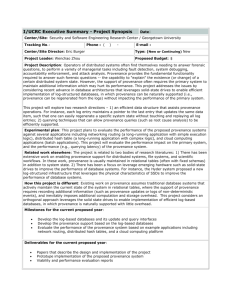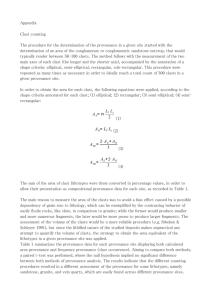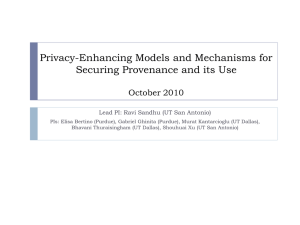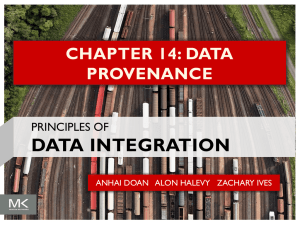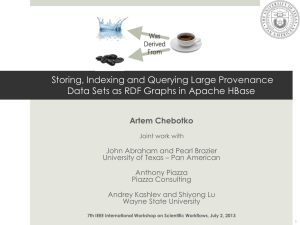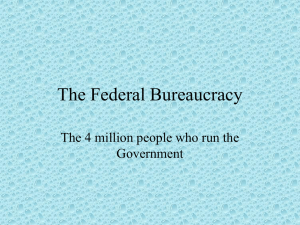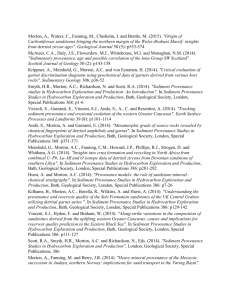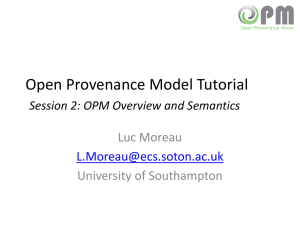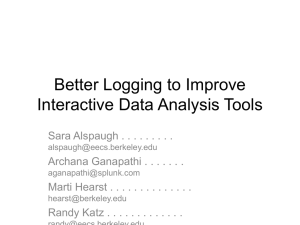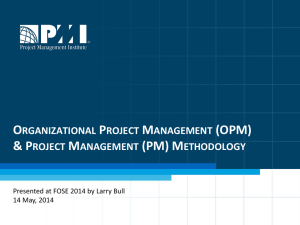slides (ppt) - The Open Provenance Model
advertisement
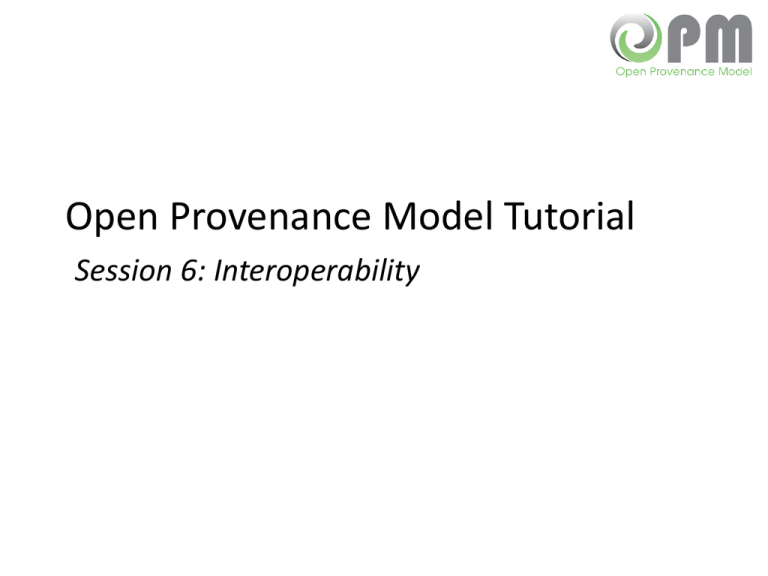
Open Provenance Model Tutorial Session 6: Interoperability Session 6: Aims In this session, you will learn about: • Steps towards interoperability • Interoperability challenges • Next steps towards achieving interoperability Session 6: Contents • • • • • The Open Provenance Vision (revisited) PC3 PC4 Beyond Representation Discussion THE OPEN PROVENANCE VISION Context: heterogeneous environments • Applications consist of compositions of loosely coupled, multi-institutional, heterogeneous components • How to trace the origin of data in such environments? Provenance Across Applications Application Application Application Application Application How to understand the provenance of data products derived by all these applications? Provenance Across Applications Application Application Application Application Application Provenance Inter-Operability Layer The Open Provenance Model (OPM) Provenance Inter-Operability Layer Open Provenance Vision • Open Provenance Vision is a vision of a set of architectural guidelines to support provenance inter-operability, consisting of – controlled vocabulary, – serialization formats and – APIs • Open Provenance Vision allows provenance from individual systems to be expressed, connected in a coherent fashion, and queried seamlessly. Export/Import Approach(PC3) PS4 PS2 PS1 PS3 Provenance Inter-Operability Layer • Convert PSi content to OPM • Import OPM into PS • Run queries over PS PS • N+1 conversions • Centralisation (scalability, security concerns) • Running queries is easy Distributed Query Approach PS4 PS2 PS1 PS3 Query API Query API • Offer OPM based Query API • Federated query component Query API Federated Queries Query API • Query API not specified • N query APIs to implement • Running queries is challenging • Better scalability Common Tools Provenance Inter-Operability Layer Visualisation Reasoning Conversion MOVING TOWARDS INTEROPERABILITY (PC3) Provenance Challenge 3 • Identify weaknesses and strengths of the OPM specification • Encourage the development of concrete bindings for OPM in a variety of languages • Determine how well OPM can represent provenance for a variety of technologies (scientific workflow, databases, etc.) • Demonstrate that a complex data products provenance can be constructed from process assertions produced by multiple combinations of heterogeneous applications • Bring together the community to further discuss the interoperability of provenance systems. PC3 Workflow • The Pan-STARRS project is building and operating the next generation sky survey • The load workflow PC3, appearing at the handoff between the image pipeline and the object data management, ingests incoming CSV files into a SQL database. PC3 Objectives • Implement Load workflow • Implement queries: – For a given detection, which CSV files contributed to it? – The user considers a table to contain values they do not expect. Was the range check (IsMatchTableColumnRanges) performed for this table? • Export provenance to OPM • Import other teams OPM outputs • Run queries over other teams’ provenance Good First Steps • Teams were able to read and write each others OPM Graphs • Most teams were able to perform queries on other OPM Graphs • Common Tools for provenance – OPM Toolbox – Tupelo API – Graph visualizations Challenges • Different structures for the same process • Difficult to determine where to start a provenance query • Lack of values or ability to look-up values made querying hard • Lack of types for filtering • Lack of consistency across time – This is the same artifact but in a different state Updates to OPM 1.1 • Profiles to: – Enable guidance about structures used – Ability to look up particular values through vocabulary • Types • Persistent names VERIFYING INTEROPERABILITY (PC4) Are we closer? • Propose a final step (PC4) • Comprehensive test of interoperability using OPM • Like prior challenges but expanding the application – Include users – Include interactive applications – Include decision points Abstract Scenario User Performs Action Exchange between Services Publish Data at URL Publish Data to Third Party Collaborati ve Editing Citing Data in Paper User Decision Point User DecisionPoi nt Credentials Running a service by others Collections Processing Workflow Running Services Workflow with data others Discovery by Query Social Collaborati on Crystallography Workflow Provenance Questions • How many times has this data been cited in other reports? • For a given crystal, how often did a crystallographer reject and reproduce coordinates (the later stages of the experiment)? – This is important because difficulty in obtaining an adequate crystal image can indicate that the original diffraction data was poor quality • The report has been published but how many times has it been edited before being published? Additions • A common vocabulary • Integration points – Allow different kinds of systems to “drop test” integration • Key: distinguish between provenance interoperability and other forms of interoperability • End-to-end provenance, not everything within the same system Schedule • Abstract Scenario • Identify all the data flowing in the system with respect to the crystallography scenario (this can be mocked up) where possible we have example data: (August 30) • For each pattern of the process produce a mock-up of the opm graph with respect to the data in step 2 and make sure they stitch together (Nov 30) • Finalize queries with respect to scenario (Dec 15) • Import and implement queries over the mockup (Feb 28) • Generate and publish Provenance for each pattern (Feb 28) • Import and Implement Queries over the generated provenance (Mar 30) • Decide whether to do api compatibility • Prepare slides for challenge [Jun 1 - Jun 8] • PC4 Workshop June 10 BEYOND REPRESENTATION Vision • OPM provides a representation of provenance • But interoperability requires some more: – Access provenance – Given a document, what is its provenance – Record provenance Answering these questions • Simple solutions • Access: http get • Document: embedding information using RDFa • Record: basic web service [Groth2010-provenancejs] [prep2009] Conclusion • We are close to interoperability in provenance systems • Community! Community! Community! • Please participate • Feedback, where do you need interop?

